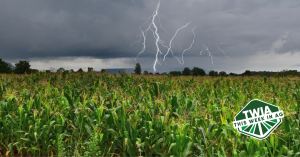By Jared Alder, MS

To keep effluent within the parameters of their facility permits, operators must constantly evaluate the chemical makeup of their treatment systems and determine the precise amounts of chemicals that should be applied to get a high-quality discharge.
Costs associated with using chemicals for treatment and the formation of high-quality floc vary depending on if there is overdosing or underdosing of chemicals. A failure to introduce enough chemicals to keep wastewater quality within regulatory limits can lead to outrageous fines, operational mandates, and lack of confidence in a utility’s ability to treat wastewater. In addition, operators need to be just as cautious when it comes to using too many chemicals. Often, it is very tempting to be too safe rather than sorry and overdose with chemicals to get the wastewater effluent within the correct treatment parameters. However, overdosing brings a multitude of problems that should make treatment operators think twice before engaging in that practice.
When a treatment plant increases its use of polymer or tweaks the concentration of polymer during flocculation, for example, it can create what is known as “pin floc.” This floc is so small and light that it will float to the top of the treatment tanks and will not settle to the bottom, where it could then be removed and treated with the biosolids process. Since the pin floc—which contains contaminants—will not settle, the contaminants can create an effluent that will not meet permit requirements.
When it comes to removing nutrients from wastewater, it is very common to overdose with chemicals such as ferric chloride. Ferric chloride is a chemical that is primarily used to combat the presence of phosphorus, which is pretty common in modern wastewater treatment systems. (In previous blogs, we have mentioned excessive phosphorus in effluent as contributing to the formation of toxic algae if released into source bodies.) Ferric chloride is a coagulant, which means it is used to promote the clumping of fine particles into larger flocs so that they can be more easily separated from water. If operators use too much of a coagulant such as ferric chloride, a reversal in the natural electrical charge of the floc can occur, which will force the system’s suspended solids to destabilize, complicating the entire treatment process.
Even if operators avoid an inadvertent chemical reaction when overcompensating, it is quite probable that they are wasting money with every needless addition. With shrinking budgets and rising energy and technology expenses, treatment plants can’t afford increases in operating costs resulting from wasted chemicals and non-compliance penalties.
Equally problematic outcomes can stem from overdosing or underdosing of effluent with chemicals, and wastewater treatment operators must find the right balance to treat them adequately and cost-effectively. Over- or underdosing may have come from a misunderstanding of what constituents made up an operation’s waste stream or what levels of chemicals are needed to correct it. Advances in chemical dosing systems and instrumentation help eliminate that issue. Advances in laboratory monitoring in conjunction with SCADA and online monitoring can help provide real-time data that can then lead to better treatment process conditions.
Related Posts

This Week in Ag #63
“Plants sure know the difference between rainwater and hose water.” That was my wife’s observation Saturday morning, after seeing the rapid overnight growth, beautiful green color, and new blooms from our garden plants, following a thunderstorm that brought a half-inch of rain.

This Week in Ag #8
Farmers love to grow corn. Only twice in modern history has corn not held the title of the most-grown crop in the USA. That was in 2018 and (if you count it) 1983, when the government’s PIK program artificially swayed planting practices. Spurred by record fertilizer prices, many projected soybeans would overtake corn last year

This Week in Ag #53
“They’re not making any more of it” has long been a popular response among farmers justifying a land purchase (or in the case of retirees or heirs, for holding on to it). But now it seems, they’re making less of it. A lot less. Like 20 million acres less. That’s about the size of Maine.

